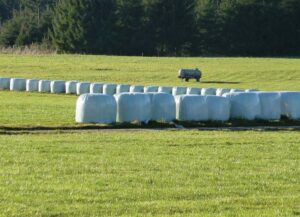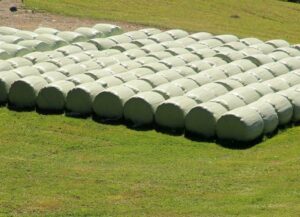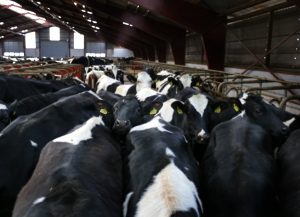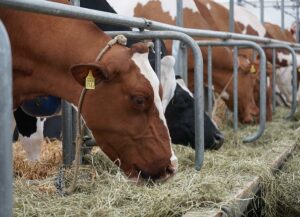Fernando Diaz
Perennial ryegrass (Lolium perenne L.) is a cool-season grass grown worldwide. Its high protein and water‐soluble carbohydrate (sugar) content makes this grass one of the most popular forage crop in the dairy industry, mainly in pasture production systems. Sugar content in perennial ryegrass varies markedly along the year, showing minimum values during early spring and maximum concentration during winter.
In order to improve its nutritional quality and cow performance, grass breeders have developed perennial ryegrass varieties with a high-sugar trait. However, according to some evidence, environmental conditions affect the expression of this trait. A study carried out at the research station of the Universidad Austral de Chile, Valdivia (southern Chile) evaluated whether the high-sugar trait of perennial ryegrass cultivars express under temperate climate conditions.
The climate in this area is characterized by a high relative humidity, low temperatures and high annual rainfall record, although this is minimum in summer. When this study was conducted (June 2014 – May 2015), weather conditions were characterized by average daily maximum temperatures of 17.5°C (range: 10.4 – 25.6°C), and average daily minimum temperatures of 8.4°C (range 6.0 – 12.1°C).
The researchers Rivero et al. (2019) tested four perennial ryegrass cultivars, two standards and two high-sugar:
- Diploid standard with intermediate heading date
- Tetraploid standard with late heading date
- Diploid high-sugar developed in New Zealand with late heading date
- Tetraploid high-sugar developed in Europe with intermediate heading date
Sugar content was analyzed in fresh grass samples collected on early spring (August 2014), spring (October 2014), summer (January 2015) and fall (April 2015). Grass was cut using a hand shear at height of 5 cm to simulate grazing. In order to prevent sugar wastage post-harvest, samples were frozen immediately in liquid nitrogen on site and stored at −20°C.
Table1. Sugar content (% DM) in fresh ryegrass samples
| Cultivar | Early Spring | Spring | Summer | Fall |
| Diploid Standard | 16.0 | 19.5 | 27.0 | 21.0 |
| Tetraploid Standard | 14.0 | 20.0 | 24.0 | 22.0 |
| Diploid High-Sugar | 15.0 | 19.0 | 25.0 | 20.0 |
| Tetraploid High-Sugar | 18.7 | 18.0 | 23.5 | 26.6 |
The results, published in Grass and Forage Science, indicated perennial ryegrass cultivars did not show a consistent expression of the high-sugar trait. Table 1 reports sugar content (% dry matter; DM) in fresh ryegrass samples collected across four periods.
- Sugar concentration was not different among cultivars in spring and summer, averaging 19.4 and 25.1% DM, respectively.
- In early spring, however, the European high-sugar cultivar had greater sugar content than the tetraploid standard cultivar and was similar to both diploid cultivars.
- Similarly, the tetraploid high-sugar cultivar had significantly greater sugar concentration in Fall than the remaining three cultivars [(26.6 vs. 21.0% DM (average of the three).
- In addition, the researchers observed variation in protein content among cultivars. On average, the tetraploid high-sugar showed the greatest value (23.0% DM), tetraploid standard and diploid high-sugar an intermediate value (21.8% DM) and the diploid standard the lowest value (20.4% DM).
- Interestingly, annual DM yield was similar among cultivars, averaging 8.43 t/ha.
In conclusion, this 12-month study conducted in a temperate environment in southern Chile indicates that climate conditions affect the high-sugar trait expression of perennial ryegrass. While the European high-sugar cultivar showed greater sugar content in early Spring and Fall, the New Zealander was similar in sugar concentration than the standard cultivars. Therefore, the high-sugar trait in perennial ryegrass does not ensure a higher sugar concentration under temperate climate.
Reference
Jordana Rivero, Oscar A. Balocchi, Cristian J. Moscoso, Juan Agustín Siebald, Fabián Lukas Neumann, Don Meyer, Michael R. F. Lee. 2019. Does the “high sugar” trait of perennial ryegrass cultivars express under temperate climate conditions? Grass and Forage Science. 4:496–508.
© 2019 Dairy Knowledge Center, LLC. All Rights Reserved.











